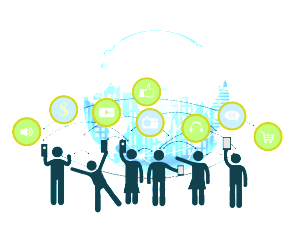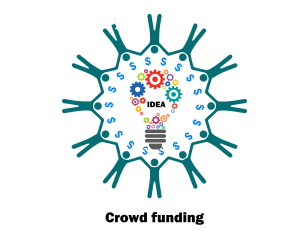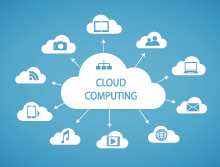The accelerated impact of Digital Transformation has rewritten the existing rules of business models. The established process and traditional models are rendered redundant in the wake of technology upsurge. Sharing Economy is one such phenomenon that has expanded and connected our world and businesses. Borrowing money, renting spaces, carpooling or sharing services, the rise of collaborative consumption model or popularly known as ‘Sharing Economy’ is a disruptive force globally. Airbnb for renting, Uber for carpooling, Task Rabbit for services are naming a few instances out of many.
So what is a Sharing Economy?
Sharing Economy is a socio-economic ecosystem where assets or resources, physical or intellectual, are shared either for free or for a fee. Typically the internet is the mode of sharing in this ecosystem. It includes shared distribution, production, and consumption of goods among individuals or organizations.
The Sharing Economy being in its early phase, is mostly known for the amenities which enable peer to peer exchange with the aid of technology. This socio-economic system entrenches sharing and alliance in its core – across all aspects of life.
Word “Sharing” in “Sharing Economy refers to the use and access to the physical or human resources or assets which may or may not include monetary exchange. Sharing Economy has enabled a distinctive value exchange. It can be either service in the exchange of service or monetary benefits based on the mutual agreement. The concept of Sharing Economy not just enables optimal utilization of resources but also facilitates environmental betterment and preservation.
5 P model of “Sharing Economy”

A Sharing Economy is a self-sustainable socio ecosystem which can be modeled into 5 P’s .
People
People are at the core of “Sharing Economy”, sitting in the driver’s seat to run the Sharing Economy. The need for the Sharing Economy starts with the need or objective of people or organization. They firstly define their goals or requirements and then seek out other people with the resources to fulfill their need, through sharing, in lieu of compensation or barter as per the mutual agreement and benefits.
Problem
An idea is born every time a problem is encountered. The growing population and shrinking resources are creating an imbalance in the economy and an innovative solution was required to solve the discrepancies. Sharing Economy presents itself as an apt and effective solution for this problem by bringing together people who have something and, connecting them with the people who need something.
Principles
While “People” and “Problem” are the initiators and catalyst of Sharing Economy, the principles are the framework that defines the process and working of the Sharing Economy. The principles therefore act as the route map to achieve the desired goal and without principles it cannot stand for a long time. Until an individual develops a habit of sharing the resources it may fall down within days or months.
Production
In Sharing Economy, people, organizations, and committees produce or coproduce the resources collaboratively or collectively. Technologies like the internet has enabled the concept of collective creation or utilization of the resources with minimum environment impact. A strong sense of social responsibility enables and promotes this collaboration.
Planet
Finally and most essentially, Planet conservation, resource optimization and availability for all, is the underlying thought behind Sharing Economy.
Confines in “Sharing Economy”
The Sharing Economy is redefining the traditional industrial concept of interplay between producer or owners and consumers. In the Sharing Economy, an individual can wear multiple hats, of producer, owner or consumer. This blurs the conventional line between the players in the market and makes the economy more dynamic and multidimensional. A Sharing Economy can contribute largely to the social and psychological aspects of a society with more efficient economy, better utilization of environmental resources and increase of overall consumer surplus, along with the GDP benefits.
Though there are numerous benefits of “Sharing Economy”, regulatory limitations make it a bit difficult to implement based on type or economy and its country or operations. One has to understand the benefits and implications of Sharing Economy in order to leverage it for social benefit and making our environment a better place.
Peer-to-Peer lending is a perfect example of “Sharing Economy” but every country’s regulations drive it as per their laws to keep their financial system intact and pure. Uber is another example which operates on principle of sharing cabs for monetary benefits and expense management, additionally it also aids to, reduce the congestion on the road and controls the impact on the environment. But again, not every country has same rules for allowing User to operate.
Figure: Peer to Peer Lending
The Sharing Economy has gained larger momentum in the last few years and it is getting adapted globally. The change is inevitable and the technology will continue to evolve. What we need to have is a clear understanding of the pros and cons pertaining to this new concept and apply it at the right place at the right time. It is yet to be seen, whether Sharing Economy is just a fad or the future, but nonetheless it is something with a great potential to bring in a positive change. After all, Sharing is caring!
Read our whitepaper on Peer to Peer Lending

Sumit is a Business Analysis/Consulting professional with ~7 years of experience in the Banking Domain. He is specialized in leveraging latest technologies to enhance customer experience and transform pioneering ideas into products. His expertise lie in the area of Corporate Banking, P2P Lending Marketplace and Lending Automation. He is currently working on an end to end P2P lending solution for one of the lending organizations in UK. In his spare time, Sumit enjoys different genres of music and explores new places. He is also a food lover and indulges in different varieties of food.









